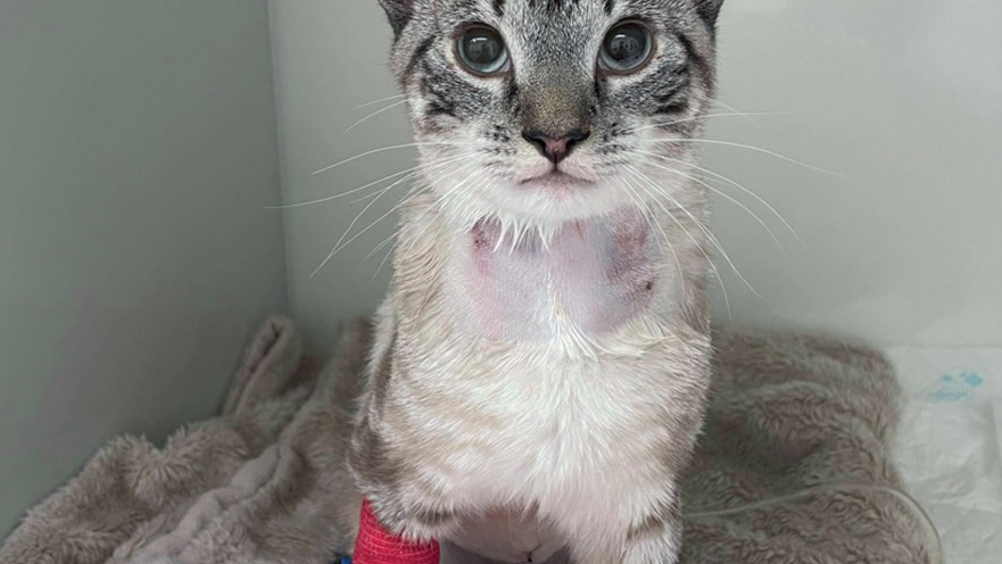References
Emergency care of a cat with a ruptured bladder

Abstract
A 7-month-old domestic short-hair male neutered cat, Crumble, arrived at hospital after falling from a first floor window. He had vomited after the fall, presented as tachypnoeic, with pale pink mucus membranes and poor peripheral pulses. Crumble required shock rate intravenous fluids, methadone (Comfortan; Dechra) given at 0.3 mg/kg for analgesia, diagnostic imagining and blood tests. Blood tests showed uremia which indicated uroabdomen. Diagnostic imaging was limited because of pain. Additional analgesic methadone was given at 0.2mg/kg. The serosanguinous fluid drained from abdomen confirmed ruptured bladder. Continuous rate infusion (CRI) of fentanyl (Dechra) running at 3 mcg/kg/hour was initiated, and a plasma volume substitute as a bolus of gelofusine 5mg/kg bolus over 15 minutes was given to help stabilise hypotension. A urinary catheter was placed in preparation for surgery and noradrenaline CRI was started once under anaesthesia. Intravenous fluids were continued to help with uremia, and the broad spectrum antimicrobial co-amoxiclav 20 mg/kg was given, as well as fentanyl CRI for further analgesia. The patient remained in hospital to monitor uremia, hypotension and pain, as well as urine output. He was discharged after 3 days and seen back after 2 days to review.
A 7-month-old domestic short-haired male neutered cat presented at the hospital after a suspected fall from a first floor window. The owner reported that Crumble was an indoor cat, found outside in the morning vomiting, and as there was no other way injuries could have occurred, they concluded he had fallen from an open window on the first floor.
Uroabdomen is most likely caused by abdominal trauma (Fossum, 2009), in this case caused by a fall. As in this case, many blunt traumas cause a bladder rupture (Findji, 2012).
Abdominocentesis is often the best way to confirm a diagnosis of uroabdomen (Kellett-Gregory, 2020). Stabilisation of the patient before repair is vital, including managing hyperkalaemia, metabolic acidosis, azotaemia, hypotension and pain.
Crumble was anaesthetised for surgery to perform a repair of a c-shaped tear in the apex of the bladder. Once this was repaired his abdomen and bladder was also flushed. Further surgical considerations were hypotension, as well as hypothermia, sepsis and hypovolemia. Crumble continued use of intravenous crystalloid fluids (Hartmann’s), noradrenaline, antimicrobials and multi-modal analgesia and Bair Hugger (3M) to help with these.
Register now to continue reading
Thank you for visiting The Veterinary Nurse and reading some of our peer-reviewed content for veterinary professionals. To continue reading this article, please register today.

